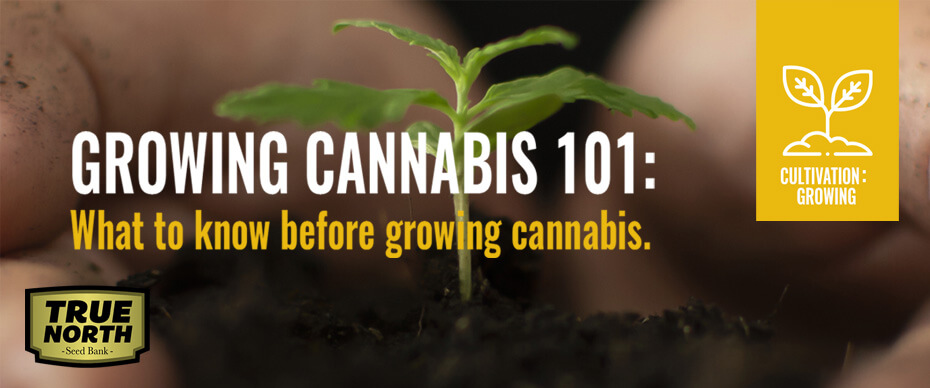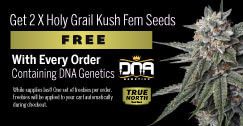
Growing cannabis for the first time can be overwhelming, especially when you’re trying to navigate thousands of “how-to” tutorials about growing cannabis.
Local laws will determine what’s required for cannabis grow operations of all sizes. After you understand cultivation basics, you're better able to calculate full-cycle operational costs. Master growers keep detailed records to help increase yield quality & quantity for each unique seed varietal.
Here we look at everything you need to know before growing cannabis, including laws, equipment, and harvesting.
Growing Cannabis: What Are The Laws, Limits, Restrictions, Licensing Requirements, Permits, Etc
Before you start growing cannabis, you need to familiarize yourself with your local laws, licenses, and regulations governing the entire process.
General laws surrounding the entire process of growing cannabis includes the control of the Food & Drug Administration (FDA), Farm Bill, and the status of cannabis legalization in your state.
Currently, the FDA is the only federal institution asserting and maintaining the idea that CBD is illegal and under their direct control -- even though almost all other federal agencies facilitate CBD.
After Trump signed the Farm Bill, the hemp and products were removed from the list of the substances under Drug Enforcement Agency’s (DEA) control.
Even though cannabis (THC) is federally illegal, and whether you are growing cannabis for recreational or medicinal use, you need to know your state's laws and regulations that apply to cannabis growers.
As of now, 14 US states have legalized the recreational use of cannabis while the U.S Virgin Islands and other 16 states have decriminalized this substance's use.
The U.S law permits only the growth of cannabis (hemp) with less than 0.3% THC.
Although the federal government has its laws about cannabis, the states make and enforce their own separate laws, which apply to their residents.
Even though cannabis is legal in some states, you may need a license and permit for your state to grow cannabis and other cannabis products.
Some exceptions may apply depending on the size, location, and other factors of your grow operation.
Cannabis Growing Basics: Cannabis Terminology, Equipment, And Best Seed Genetics For Your Needs
Some of the foundational basic terms you need to know to get started growing cannabis begin with understanding the different growth methods (hydroponics, soil, aquaponics, vertical, etc).
It’s important to have a good understanding of the grow method basics before you start cultivating the specific cannabis strain genetics you desire to grow.
Although it’s not absolutely critical to be a certified expert on the cannabis plant, you should have a basic understanding (or a minimum awareness) of the basic terminologies and equipment needed.
Start by learning about the life cycle of the cannabis plant anatomy, soil, climate, light, water, and nutritional requirements.
Cannabis is a flowering plant that can be either male, female, or hermaphrodite.
If you’re growing cannabis for the psychoactive THC flowers, you’ll want to consider purchasing cannabis seeds that are already feminized to remove the risk of some plants being non-psychoactive males.
You’re able to grow various cannabis strains indoors, in greenhouses, and/or outdoor environments.
The seed genetics you select will help you determine the most ideal environment to cultivate your cannabis plants.
Three basic cannabis varieties include:
- Cannabis Sativa
- Cannabis Indica
- Ruderalis
Each cannabis variety has a unique effect, potency, and ideal growth conditions & requirements.
Though Indica and Sativa are affected by light during their flowering stage, the ruderalis species is not typically as affected by the amount of light when flowering.
The cannabis plant undergoes three stages in its lifetime, including:
- Seedling
- Vegetative
- Flowering
Furthermore, your cannabis plants require sufficient airflow and are achieved through a simple fan that can blow air back and forth across the tops of the plants.
The exhaust fan should be proportional to the size of your room to get rid of the air in the growing space once it's produced.
Cannabis Growing Cost, Electrical Needs, Nutrients, Equipment, Seeds
After understanding the cannabis plant, you need to know the average daily, monthly or annual electricity costs of your space to continue to appropriately optimize your operation.
According to the Northwest Power and Conservation Council (NPCC), the flowering stage will take up about half of your grow cycle’s electrical needs.
The average total kWh of electricity required to produce one pound of cannabis can range between 1,000 - 3,000 kWh, depending on if you do everything right.
By understanding the average electricity costs for indoor cannabis cultivation can help you establish a full plan that won't surprise you when you get your monthly electric bill.
To figure out your electricity cost, start by finding out the cost of electricity in your locality per Kilo-Watts Hour.
After you’ve found your electricity costs per kWh, next you want to make a list of the total wattage of your lights, pumps, fans, and other equipment using electricity.
Count the number of hours these electrical devices usually run and use it to compute the electricity bills' estimated costs every month.
Besides the cost of electricity, you will need to factor in the cost of equipment such as lights, power strips, extension cords, grow location (grow tent), fans, etc.
The equipment you will need depends on the size of your farm and your growing skills.
The following are the basic equipment needed in a cannabis growing farm:
- Grow lights (CFL, LED, HID, etc)
- Carbon air filter
- Oscillating fan
- Electrical timer for your lights
The equipment can be quite expensive and depending on the model, cost can range between $100 and $1000+ to get started.
The advantage is that you only buy your equipment one time to get started.
If you’re concerned about the scale of your grow operation, you may want to consider consulting with an electrical technician to find out whether you have sufficient electricity set up.
A proper in-home electrical setup will need to consistently power all of your equipment to prevent power overloads.
Cannabis Nutrient Deficiencies Identification, Pests, Etc
Just like other plants, cannabis is liable to nutrient deficiencies and pest attacks.
It’s critical to know the signs of various nutritional deficiencies so you’re able to complete your grow cycles without any major problems.
If your cannabis plants lack the vital nutrients, they can experience numerous potential symptoms resulting in leaf tissue dying (necrosis).
On the other side, too much nutrients can cause toxicity and could also cause full plant death.
When your cannabis plants are deficient in essential nutrients or are under attack from pests, the result is stress.
Stress can cause your cannabis plants to slow in growth and may reduce your overall yields.
The nutrient deficiencies symptoms can present themselves through the change in color in the leaves and other signs of unhealthiness, such as wilting, leaf curling, and much more.
Before correcting nutrient deficiencies, one potential first step is to test and maintain the correct pH levels.
Proper pH levels enable your cannabis plants to better absorb the nutrients with ease and will less stress.
If your cannabis plants experience highly acidic or alkaline conditions, it will be hard to absorb some vital nutrients.
Once you’ve tested the pH and its range is between 6 and 7, then you can move on to potentially adding plant nutrients.
Three major vital cannabis plant nutrients:
- Nitrogen
- Phosphorus
- Potassium
Cannabis plant nutrients come in a near endless variety and can be easily purchased in a liquid bottle or naturally created compost manure.
Monitor Cannabis Growing Performance
By keeping a detailed record of your grow operation, such as taking photos right from the time you plant the crops up to harvesting time, can help you to keep optimizing performance.
Detailed record keeping lets you look back on your grow cycles and reflect on how you could have done better to produce high quality and high quantity yield.
You can opt for a weekly or monthly progress update or write a journal with details on the plants' growth, the nutrients they need, lighting schedule, pest, and disease incidences, etc.
Documenting your progress will also allow you to learn and see the patterns of the factors affecting your plants.
By observing certain patterns, you're better able to understand how to anticipate and prevent problems before your plants are too far gone.
Preventing problems before they occur can also drastically increase your yield’s quality and quantity.
Cannabis Harvesting
Harvest your cannabis when the leaves start yellowing, when the buds are plump, or if your plants start hanging from the weight of the buds.
By familiarizing yourself with the entire harvesting process, you’ll better understand how delicate each stage of the grow cycle can affect the final buds.
With every strain having unique properties, there can be different sweet spots for how long you let it dry after harvesting.
If the buds are harvested earlier, they will be more uplifting than if you wait longer to harvest.
Waiting to harvest will have more sedative and relaxing effects.
The sticky, shiny, little crystals on the buds (Trichomes) will help you determine when it’s the ripe time to start partaking.
A recommended time to harvest is when the trichomes are still mostly cloudy with just a touch of amber.
Final Thoughts
As cannabis laws continue to change, more people are likely to venture into cannabis farming.
The above information will help guide you on the basics you’ll need to know in getting started laying the foundation for your journey into growing, managing, and harvesting your favorite strains of cannabis.

About the author: Joe Powers
After an incident in the military, in 2011, Joe Powers began investigating cannabis by talking with industry leaders. In 2016, Joe launched Hemp Writer with its first publication in clarifying disinformation on specific updates to certain federal CBD laws.
Upon calling out a leading cannabis law firm spreading dis-info, Hemp Writer established itself as an authority in clarifying updated information emerging from the cannabis industry. Joe continues charging forwards with increasing momentum to continue fulfilling his vision of SHARING ACCURATE CANNABIS INFORMATION.










